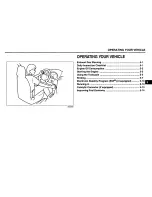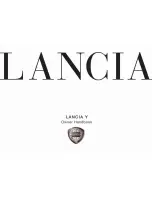
99
After the drum is removed, check the safe fastening of the
wheel cylinders to the shields. Pay attention to the condition of
the wheel cylinders, protective caps, the wear of the frictional
plates, and the condition of the brake drum.
Protective caps must be tightly installed in the piston and
cylinder seats, and should not be damaged.
If the drum working surface has deep notches and burrs or
uneven wear, re-bore the drums from the central orifice. The
maximum permissible diameter of the working re-bored brake
drum is 281 mm.
It is not recommended to change the brake drums between
the hubs, as the working surfaces of the drums will wobble more.
The gap between the shoes and the drum is restored
automatically as the linings wear.
Check the wear of linings through the orifices in the shields.
Unplug the orifices, inspect the linings (the thickness of the
linings should not be less than 2.5 mm), and re-plug the orifices
back.
Fig. 9.35. Rear wheel brake:
a — anchor stud marks;
1 — anchor studs; 2 — shield; 3 — orifices for visual inspection of brake
linings; 4 — wheel brake cylinder; 5 — bypass valve; 6,12 — brake shoes;
7 — protective cap; 8 — piston; 9 — O-rings; 10 — snap ring; 11 — release spring
Содержание HUNTER 315195
Страница 6: ...6 Fig 1 3 Location of the engine identification number...
Страница 132: ...For Notes...
Страница 133: ...For Notes...
Страница 134: ...For Notes...
Страница 135: ...For Notes...
















































